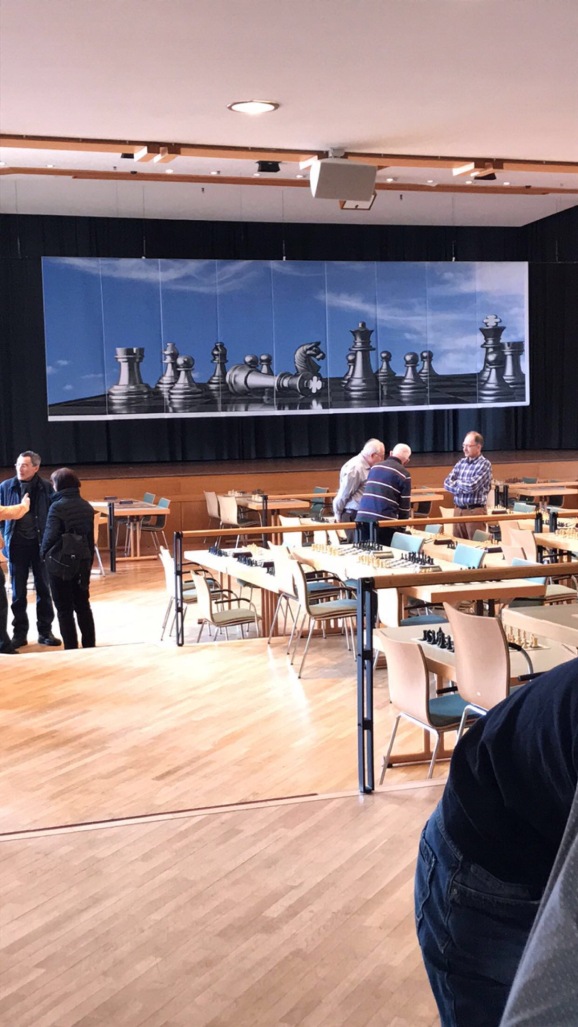Having been inspired by the one and only Kostya Kavutskiy and his Best of US Chess of 2016 article, I spent 2 months traveling through Europe this summer as a chess vagabond.
I’ve been so grateful to use chess as a vehicle for seeing new places, meeting new people, and experiencing new things.
Here are some of highlights of my summer trip that will hopefully inspire other readers to try the nomadic chess lifestyle:
I got obliterated by Shirov
Growing up, I had idolized Shirov. I’ve had a copy of Fire on the Board for as long as I can remember. When I got the opportunity to play him in a small rapid tournament in Latvia, I was eager to put up a tough fight.
Unfortunately, I did the complete opposite of putting up a tough fight. I totally collapsed in the opening. It was ugly. My position was resignable on move 11. To make things even more embarrassing, the whole catastrophe was caught on video:
I got crushed by Sveshnikov
Later in the same tournament, I got to play Evgeny Sveshnikov. I played d4 to avoid his Sveshnikov variation, but he beat me anyway.
I saw a flying polar bear
 Prague, Czech Republic
Prague, Czech Republic
My Czech friend Katerina Nemcova has always told me that Prague is a magical city. I didn’t realize it was this magical.
My two queens were not enough for Nabaty’s two rooks and bishop
As I stared at this position with less than 1 minute ticking down on my clock, I realized my doom. It’s not everyday you reach a position where your king and two queens are all under attack. Kudos to GM Tamir Nabaty for finishing me off in spectacular fashion.

Here’s the full masterpiece:
//www.chess.com/emboard?id=3572170
I let some fish snack on my feet
Prague, Czech Republic

This so called “fish spa” is actually a popular thing in Prague. These special breed of fish called Garra Rufa nibble away dead skin, leaving the feet feeling silky smooth. I paid about $35 for 20 minutes of nibbling. My feet were super smooth for the following several weeks!
I snacked on some fish
Teplice, Czech Republic
When I ordered the trout, I was not expecting the entire trout (eyes, teeth, and bones included) to be sitting on my plate. I reluctantly consumed the meal, but I don’t think I’ll be ordering trout again anytime soon.
I executed a queen sacrifice leading to double checkmate.
The heading should offer enough of a hint…Black to move!
Here’s the full game:
//www.chess.com/emboard?id=3572238
I defeated a WGM in 9 moves
I had the honor of playing WGM Jana Bellin who has won multiple British Women’s Championships and currently serves as the medical officer for FIDE. Unfortunately for her, she did have the best game and actually apologized afterwards for losing so quickly.
//www.chess.com/emboard?id=3572240
I flew through the mountains of Benasque, Spain
With a drone that is.
I defeated Magnus Carlsen’s former coach, Simen Agdestein.
The full game is well analyzed by FM Chris Chase in The Boston Globe.

The day after defeating Agdestein, I discovered the following music video on YouTube…
I’m so glad I didn’t watch this video before I played Agdestein. It’s a difficult thing to unsee.
I witnessed someone become a GM
That someone is Andrey Kvon. He defeated GM Ivan Sokolov (with the Blumenfeld Gambit!) in the last round of the Xtracon Open in Helsingør, Denmark to secure his final GM norm. His rating going into the event? 2500 exactly. Here’s what becoming a grandmaster looks like:



























 Sure, I have yet to visit Paris and Reykjavik, but Vienna sets a high bar! The city is modern, clean, yet surrounded by centuries of history.
Sure, I have yet to visit Paris and Reykjavik, but Vienna sets a high bar! The city is modern, clean, yet surrounded by centuries of history.
 I found the Porcelain Museum while I was in Dresden. Thanks to some trading back in the 17th and 18th century, Dresden holds one of the largest porcelain displays in the world. August the Strong of Dresden even went so far as to call porcelain “white gold”, as he believed to have such a foreign and exotic collection to be a unique sign of power and wealth.
I found the Porcelain Museum while I was in Dresden. Thanks to some trading back in the 17th and 18th century, Dresden holds one of the largest porcelain displays in the world. August the Strong of Dresden even went so far as to call porcelain “white gold”, as he believed to have such a foreign and exotic collection to be a unique sign of power and wealth.





